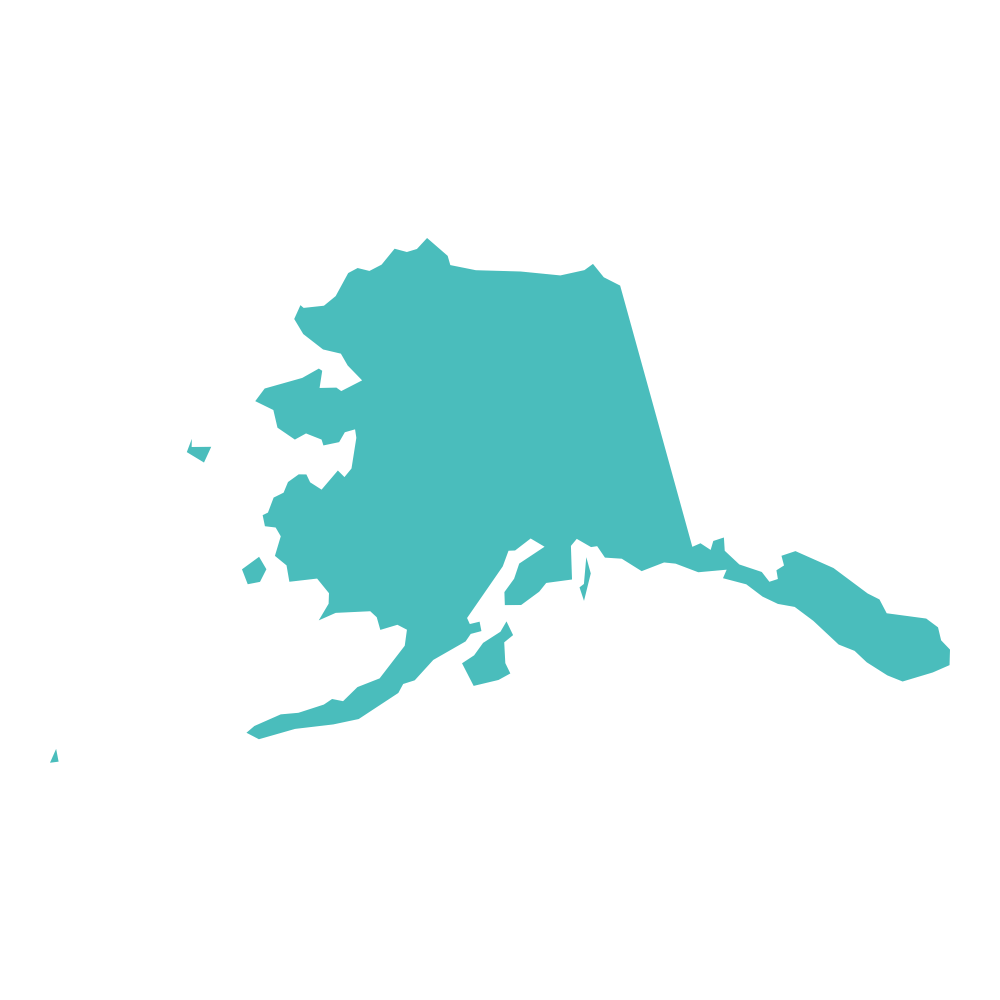Alaska

Ranking Highlights
| 2020 Rank | Change from Baseline | |
|---|---|---|
| Overall Ranking | 32 | +3 |
| Access and Affordability | 35 | +7 |
| Prevention and Treatment | 48 | +2 |
| Avoidable Hospital Use and Cost | 8 | +8 |
| Healthy Lives | 28 | +8 |
| Disparity | 17 | +2 |
| Medicaid Expansion (as of Jan. 2018) | Yes |
Demographics
| Alaska | Average | |
|---|---|---|
| Total Population | 713,703 | 322,324,172 |
| Median Household Income | $74,057 | $67,877 |
| Below 200% of Federal Poverty Level (FPL) | 25% | 30% |
| % White Race, Non-Hispanic | 60% | 60% |
| % Black Race, Non-Hispanic | 3% | 12% |
| % Other Race, Non-Hispanic | 30% | 9% |
| % Hispanic Ethnicity | 7% | 18% |
Loading Alaska...
Highlights
Top Ranked Indicators
- Primary care spending as share of total, ages 18–64
- Skilled nursing facility patients with a hospital readmission
- Medicare spending per beneficiary
Bottom Ranked Indicators
- Alcohol deaths
- Adults without a usual source of care
- Home health patients without improved mobility
Most Improved Indicators
- Breast cancer deaths
- Children who did not receive needed mental health care
- Central line-associated blood stream infection (CLABSI)
Indicators That Worsened the Most
- Adults with any mental illness reporting unmet need
- Alcohol deaths
- Home health patients with a hospital admission
Comparison with the U.S. Average
Loading data...
Estimated Gains Alaska Could Expect if Performance Improves to Match Top States
| Top State in the U.S. | Top State in the West region | Gains for Alaska |
|---|---|---|
| 65,709 | 53,144 | more adults and children would be insured |
| 31,802 | 31,802 | fewer adults would skip needed care because of its cost |
| 47,947 | 44,750 | more adults would receive age- and gender-appropriate cancer screenings |
| 2,481 | 620 | more children (ages 19–35 months) would receive all recommended vaccines |
| 22,850 | 22,850 | fewer employer-insured adults and elderly Medicare beneficiaries would seek care in emergency departments for nonemergent or primary-care-treatable conditions |
| 140 | 79 | fewer premature deaths (before age 75) would occur from causes that are potentially treatable or preventable with timely and appropriate care |
Estimated impact if this state’s performance improved to the rate of two benchmark levels — a national benchmark set at the level of the best-performing state and a regional benchmark set at the level of the top-performing state in region (www.bea.gov: Great Lakes, Mid-Atlantic, New England, Plains, Rocky Mountains, Southeast, Southwest, West). Benchmark states have an estimated impact of zero (0).
Download this State Profile as a PDF
Want more? Check out our Data Center